The Science Behind Renewable Energy Innovations
Welcome to the fascinating world of renewable energy, where science meets innovation to pave the way for a sustainable future! As we face the pressing challenges of climate change and dwindling fossil fuel reserves, the importance of transitioning to renewable energy sources has never been more critical. This article delves deep into the latest advancements in renewable energy technologies, exploring the scientific principles that underpin them and their profound impact on our environment and economy. Are you ready to discover how innovation is shaping a sustainable future? Let’s dive in!
Renewable energy sources are like the superheroes of the energy world, providing us with clean, sustainable options to power our lives. These sources include solar, wind, hydro, and geothermal energy. Unlike traditional fossil fuels, which are finite and contribute to pollution, renewable energy harnesses nature's power, allowing us to generate electricity without harming the planet. The fundamental principles behind these energy sources vary significantly:
- Solar Energy: Captures sunlight using photovoltaic cells or solar thermal systems.
- Wind Energy: Utilizes wind turbines to convert wind kinetic energy into electricity.
- Hydropower: Generates energy from flowing water, typically through dams or run-of-river systems.
- Geothermal Energy: Taps into the Earth's internal heat for power generation and heating.
Transitioning to these sustainable energy systems is vital for reducing greenhouse gas emissions and mitigating climate change. It’s not just about saving the planet; it’s also about creating a healthier environment and a more robust economy. The innovations in renewable energy are like the spark plugs of a car engine, igniting the potential for a cleaner, greener world.
Solar energy technology has undergone a remarkable transformation in recent years. With advancements in photovoltaic cells and solar thermal systems, we are witnessing a new era of efficiency and affordability in solar power. Imagine a world where solar panels are as commonplace as rooftops, powering homes and businesses alike. Recent innovations have made this vision a reality, enhancing efficiency and reducing costs, making solar power more accessible for everyone.
One of the most exciting developments in solar energy is the emergence of advanced photovoltaic materials, such as perovskites. These materials are game-changers, improving efficiency rates and driving down production costs. Just think about it: with higher efficiency, we can generate more power from less space, making solar technology even more appealing for urban environments. As these materials continue to evolve, we can expect broader adoption of solar technology, leading to a significant increase in renewable energy usage.
Concentrated Solar Power (CSP) systems take solar energy to the next level by utilizing mirrors or lenses to focus sunlight. This concentrated sunlight generates heat, which is then converted into electricity. The latest CSP technologies are not just about harnessing sunlight; they offer the potential for large-scale energy generation that can power entire cities. Imagine a field of mirrors, capturing the sun's energy to illuminate our homes and businesses—this is the future of energy generation!
One of the biggest challenges with solar energy is its intermittency. The sun doesn’t shine all the time, right? This is where innovative battery technologies and other storage solutions come into play. By storing excess energy generated during sunny days, we can ensure a reliable power supply even when the sun isn’t shining. These advancements are crucial for maximizing solar energy’s potential and making it a dependable energy source for all.
Wind energy has taken the renewable sector by storm, becoming a significant player in the quest for sustainable power. With recent technological advancements in turbine design and the rise of offshore wind farms, we are enhancing energy capture and efficiency like never before. Picture towering wind turbines gracefully spinning in the breeze, generating clean energy that powers our lives. This is not just a dream; it’s becoming a reality!
Offshore wind farms present unique opportunities for energy generation, harnessing the powerful winds that blow over our oceans. However, these projects come with their own set of engineering challenges. Innovations in turbine design and installation techniques have made offshore wind a viable and efficient energy source. Imagine a future where these majestic turbines dot the horizon, contributing significantly to our energy needs.
The integration of smart technology into wind turbines is revolutionizing how we produce and maintain wind energy. With real-time monitoring and optimization powered by data analytics and AI, we can enhance efficiency and reduce downtime. It’s like giving wind turbines a brain, allowing them to adapt and respond to changing conditions, ultimately boosting energy production.
Hydropower has long been a reliable renewable energy source, and recent innovations are taking it to new heights. From small-scale hydroelectric projects to improvements in turbine efficiency, the focus is on enhancing sustainability while reducing environmental impact. Imagine rivers flowing freely, generating clean energy without disrupting ecosystems—this is the goal of modern hydropower technology.
Run-of-river systems harness the natural flow of rivers without the need for large reservoirs, minimizing ecological disruption. This approach allows us to generate renewable energy while preserving the river's natural state. It’s a win-win situation—clean energy generation without sacrificing our precious ecosystems!
Innovations in hydropower technology aim to balance energy production with environmental conservation. Strategies for mitigating the ecological impacts of hydropower projects are crucial for ensuring sustainable energy generation. By focusing on sustainability, we can harness the power of water while protecting our natural resources.
Geothermal energy offers a consistent and reliable renewable resource, and recent technological advancements are expanding its feasibility. With enhanced geothermal systems, we can tap into the Earth's internal heat more effectively than ever before. Imagine a world where we can harness the heat beneath our feet to power homes and businesses—this is the promise of geothermal energy!
Enhanced Geothermal Systems (EGS) utilize advanced techniques to extract heat from the Earth’s crust, unlocking geothermal resources in areas previously deemed unsuitable for energy production. This technology has the potential to revolutionize how we think about geothermal energy, making it accessible in more regions around the globe.
Geothermal heat pumps provide efficient heating and cooling solutions for residential and commercial buildings. By leveraging the stable temperatures underground, these systems reduce energy consumption significantly. It’s like having a natural thermostat that keeps your home comfortable year-round while minimizing your carbon footprint!
Government policies and investment play a crucial role in promoting renewable energy innovations. Supportive legislation and funding initiatives are essential for driving research and development in the renewable energy sector. Without these efforts, we might miss out on incredible advancements that could change the way we power our world.
Financial incentives, such as tax credits and grants, encourage the adoption of renewable technologies. These incentives stimulate market growth and innovation, making it easier for businesses and individuals to invest in renewable energy solutions. It’s like giving a nudge to those who are hesitant to make the switch—helping them see the benefits of going green!
Global partnerships are essential for advancing renewable energy technologies. By fostering knowledge sharing and collaboration, we can accelerate the development of innovative solutions to energy challenges. Imagine countries working together, pooling resources and expertise to create a cleaner, more sustainable future for all.
1. What are the main types of renewable energy?
The main types of renewable energy include solar, wind, hydro, and geothermal energy. Each has its unique benefits and applications.
2. How does solar energy work?
Solar energy works by capturing sunlight using photovoltaic cells or solar thermal systems, which convert sunlight into electricity or heat.
3. What are the benefits of wind energy?
Wind energy is clean, abundant, and renewable. It reduces greenhouse gas emissions and can provide energy for large populations.
4. Can hydropower be environmentally friendly?
Yes, innovations in hydropower, such as run-of-river systems, aim to minimize ecological disruption while generating renewable energy.
5. What role do policies play in renewable energy?
Government policies and financial incentives are crucial for promoting the adoption and innovation of renewable energy technologies.
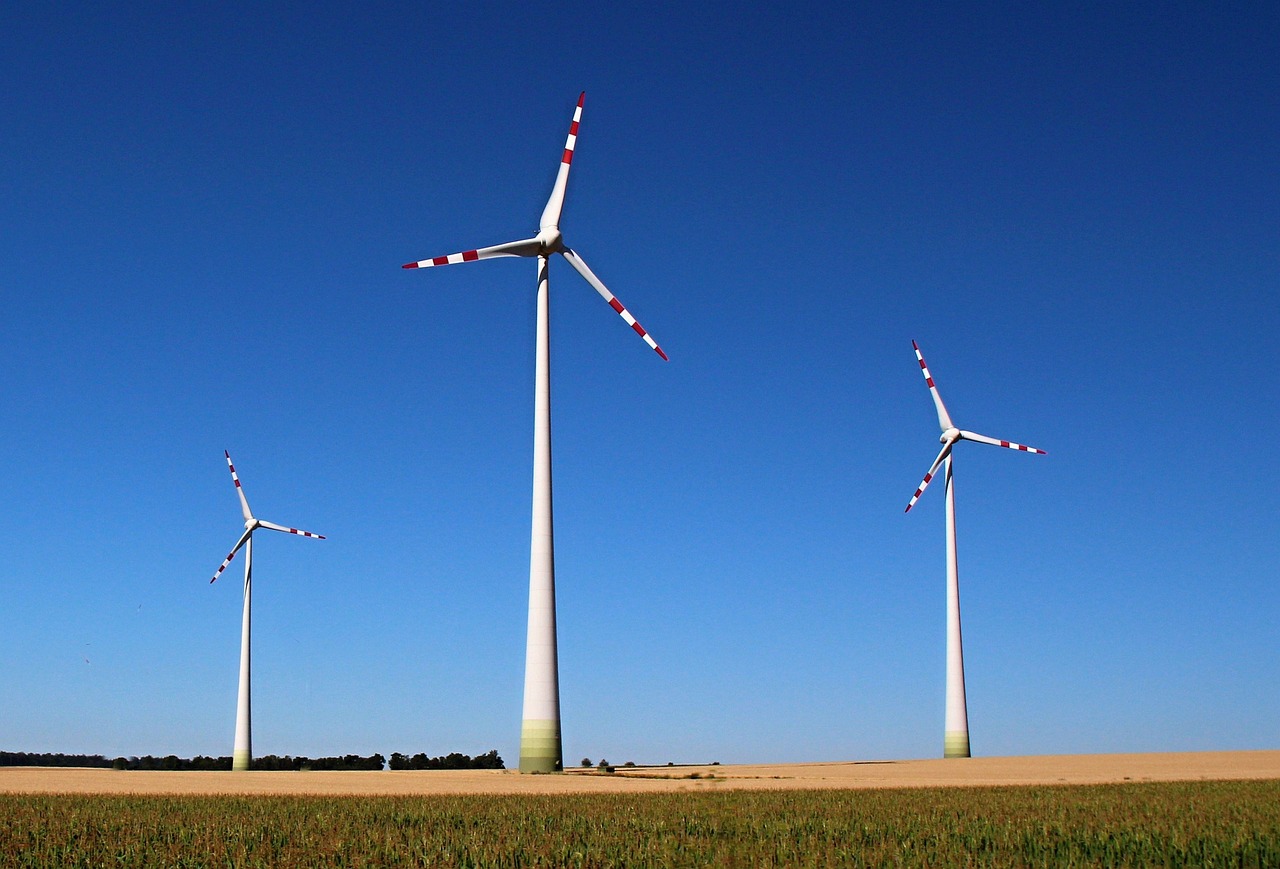
Understanding Renewable Energy
Renewable energy is a term that’s buzzing around a lot these days, and for good reason! It refers to energy sources that are replenished naturally and can be harnessed without depleting the Earth’s resources. Think of it like a never-ending buffet where the food keeps coming back! The most common types of renewable energy include solar, wind, hydro, and geothermal energy. Each of these sources has its own unique characteristics and methods of harnessing energy, setting them apart from traditional fossil fuels like coal, oil, and natural gas.
To put it simply, traditional fossil fuels are like a one-time-use plastic bag—they get the job done but leave a mess behind. On the other hand, renewable energy is more like a reusable shopping bag that helps you save the planet while you shop for energy! Transitioning to renewable energy systems is crucial for reducing greenhouse gas emissions and combating climate change. It's not just about saving the environment; it's about creating a sustainable future for generations to come.
Let’s break down the main types of renewable energy sources:
- Solar Energy: Captured from the sun using photovoltaic cells or solar thermal systems. It's like harnessing the sun's rays and turning them into electricity!
- Wind Energy: Generated by converting the kinetic energy from wind using turbines. Imagine giant pinwheels spinning in the breeze, generating power!
- Hydropower: Produced from the movement of water. Whether it’s large dams or small run-of-river systems, water is a powerful energy source.
- Geothermal Energy: Comes from the heat stored beneath the Earth’s surface. It’s like tapping into the Earth’s internal oven for energy!
What makes renewable energy so exciting is its potential to create a cleaner, more sustainable world. The shift from fossil fuels to renewable sources isn’t just a trend; it’s a necessary evolution in how we think about energy consumption. By investing in these technologies, we can mitigate the effects of climate change, reduce air pollution, and create new job opportunities in the green economy.
However, transitioning to renewable energy systems isn’t without its challenges. Factors such as initial costs, technological advancements, and infrastructure development play a significant role in how quickly we can adopt these systems. But the good news is that innovation is at the forefront of this movement, with scientists and engineers continuously working on making renewable energy more efficient and affordable.
In conclusion, understanding renewable energy is the first step towards embracing a sustainable future. By moving away from fossil fuels and investing in renewable sources, we can ensure that our planet remains healthy and vibrant for future generations. So, next time you hear about renewable energy, think of it as a golden opportunity to create a better world!

Solar Energy Innovations
In recent years, solar energy technology has undergone a remarkable transformation, leading to breakthroughs that are not only enhancing efficiency but also significantly reducing costs. This evolution is crucial as it paves the way for a broader adoption of solar power across various sectors, from residential rooftops to large-scale industrial applications. With the world increasingly recognizing the need for sustainable energy solutions, these innovations are lighting the path toward a cleaner future.
One of the most exciting advancements in solar energy is the development of photovoltaic (PV) cells. Traditional silicon-based cells have been the backbone of solar technology for decades, but recent innovations have introduced perovskite solar cells, which promise higher efficiency rates and lower production costs. Perovskite materials can be manufactured using simpler processes and can be produced in various forms, including flexible sheets, making them adaptable for diverse applications. This versatility opens up new possibilities for integrating solar technology into everyday materials, such as windows and building facades.
Another fascinating area of innovation is in Concentrated Solar Power (CSP) systems. Unlike traditional solar panels that convert sunlight directly into electricity, CSP uses mirrors or lenses to focus sunlight onto a small area, generating heat that can then be used to produce electricity. This method not only improves energy capture but also allows for energy storage, making it possible to provide electricity even when the sun isn’t shining. Recent advancements in CSP technology have led to the development of systems capable of operating at higher temperatures and efficiencies, which could revolutionize how we harness solar energy on a large scale.
However, one of the significant challenges with solar energy is its intermittency. The sun doesn’t shine all the time, and this variability can make it difficult to rely solely on solar power. To address this issue, innovative solar energy storage solutions are being developed. Technologies such as advanced lithium-ion batteries and flow batteries are being optimized to store excess energy generated during peak sunlight hours for use during cloudy days or at night. These storage solutions are crucial for ensuring that solar energy can be a reliable and consistent power source, thus increasing its attractiveness for consumers and businesses alike.
As we look to the future, the integration of smart technology into solar systems is becoming increasingly prevalent. Smart solar inverters and monitoring systems allow users to track energy production and consumption in real-time, optimizing energy use and improving overall efficiency. This level of control not only empowers consumers but also contributes to smarter energy grids, where solar energy can be seamlessly integrated into the larger energy ecosystem.
In summary, the innovations in solar energy technology are not just about capturing sunlight; they are about creating a sustainable energy future. With advancements in photovoltaic materials, concentrated solar power systems, and energy storage solutions, we are on the brink of a solar revolution. As these technologies continue to evolve, they will play a pivotal role in reducing our reliance on fossil fuels and combating climate change.
- What are perovskite solar cells? Perovskite solar cells are a new type of photovoltaic cell made from a unique crystal structure that allows for higher efficiency and lower production costs compared to traditional silicon cells.
- How does Concentrated Solar Power (CSP) work? CSP systems use mirrors or lenses to focus sunlight onto a small area, generating heat that is then used to produce electricity, offering a method for energy storage as well.
- Why is energy storage important for solar energy? Energy storage solutions are essential for managing the intermittency of solar power, allowing excess energy generated during sunny periods to be used when sunlight is not available.

Photovoltaic Technology
The world of solar energy is undergoing a remarkable transformation, primarily due to advancements in . This technology, which converts sunlight directly into electricity, has seen significant innovations over the past few years. At the heart of this revolution are new materials and designs that not only enhance efficiency but also drive down production costs, making solar energy more accessible to the masses.
One of the most exciting developments in this field is the emergence of perovskite solar cells. These materials have been a game-changer, boasting higher efficiency rates compared to traditional silicon-based cells. To put this into perspective, while conventional silicon cells typically achieve efficiencies of around 15-20%, perovskite cells have reached efficiencies exceeding 25%. This leap in performance is akin to upgrading from a standard bicycle to a high-performance racing bike; the difference in speed and efficiency can be astonishing.
Moreover, the production costs of perovskite cells are significantly lower. This is primarily because they can be manufactured using simpler techniques, such as solution processing, which requires less energy and fewer resources compared to the complex processes used for silicon solar cells. This reduction in cost paves the way for broader adoption, especially in regions where traditional solar technology may have been prohibitively expensive.
Another noteworthy innovation in photovoltaic technology is the development of bifacial solar panels. Unlike traditional panels that only capture sunlight from one side, bifacial panels can collect sunlight from both the front and back, effectively increasing their energy output. This is particularly beneficial in areas with reflective surfaces, such as snow or sand, where reflected sunlight can be harnessed to generate more electricity. Imagine a solar panel that not only captures direct sunlight but also takes advantage of the light bouncing off the ground—it's like having a two-for-one deal on energy!
To illustrate the advancements in photovoltaic technology, consider the following table that compares traditional silicon solar cells with innovative alternatives:
| Technology Type | Efficiency | Cost of Production | Longevity |
|---|---|---|---|
| Silicon Solar Cells | 15-20% | Moderate | 25-30 years |
| Perovskite Solar Cells | Up to 25% | Low | 10-15 years (improving) |
| Bifacial Solar Panels | Up to 30% | Moderate | 25-30 years |
As we continue to innovate in the realm of photovoltaic technology, the future looks bright—literally! With ongoing research and development, we can expect even more breakthroughs that will help harness the sun's power efficiently and sustainably. The transition to solar energy is not just a trend; it's a crucial step towards a sustainable future, reducing our reliance on fossil fuels and lowering greenhouse gas emissions.
In conclusion, the advancements in photovoltaic technology are paving the way for a cleaner, greener planet. As these technologies become more efficient and affordable, we are not just investing in energy solutions; we are investing in a sustainable future for generations to come.
- What are photovoltaic cells?
Photovoltaic cells are devices that convert sunlight directly into electricity through the photovoltaic effect. - How do perovskite solar cells differ from traditional silicon cells?
Perovskite cells have higher efficiency rates and lower production costs compared to traditional silicon cells. - What are bifacial solar panels?
Bifacial solar panels can capture sunlight from both sides, increasing their energy output, especially in reflective environments. - What is the lifespan of solar panels?
Traditional silicon solar panels typically last 25-30 years, while perovskite cells are still being optimized for longevity.
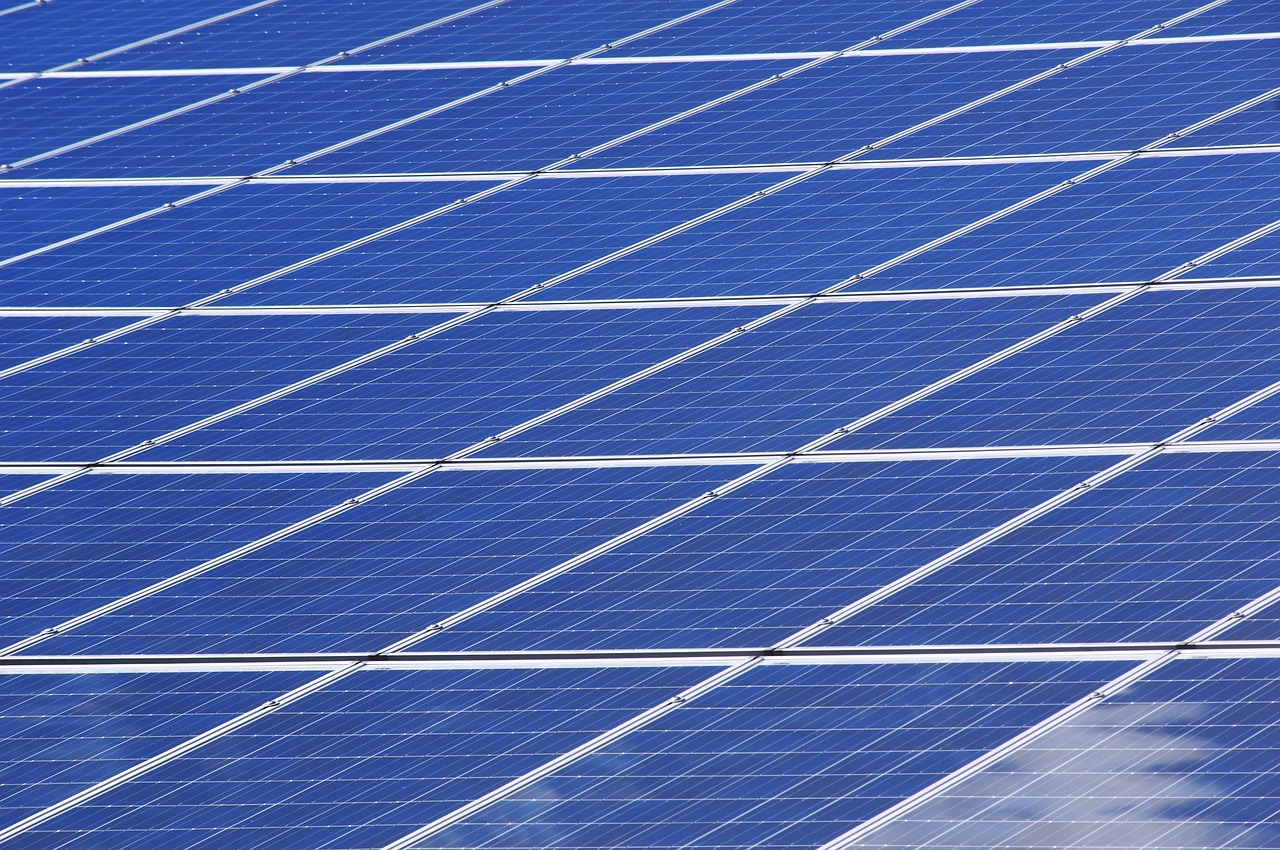
Concentrated Solar Power
Concentrated Solar Power (CSP) is a fascinating technology that harnesses the sun's energy in a unique way. Unlike traditional photovoltaic systems that convert sunlight directly into electricity, CSP systems use mirrors or lenses to focus sunlight onto a small area, generating heat that is then used to produce electricity. This method not only maximizes the capture of solar energy but also allows for energy generation even when the sun isn't shining, making it a reliable option for energy production.
One of the key advantages of CSP technology is its ability to store thermal energy. This capability means that CSP plants can continue to generate electricity after sunset or during cloudy days, providing a more consistent energy supply compared to other solar technologies. The heat generated can be stored in materials such as molten salt, which retains heat for long periods, allowing for the release of energy on demand.
Recent innovations in CSP technology have significantly improved efficiency and reduced costs. For instance, advancements in mirror design and tracking systems allow CSP plants to capture more sunlight throughout the day. Moreover, the integration of advanced materials and manufacturing techniques has led to a decrease in the overall cost of CSP systems, making them more accessible for large-scale energy projects.
Here are some notable CSP technologies currently making waves in the industry:
- Parabolic Trough Systems: These systems use curved mirrors to focus sunlight onto a receiver tube filled with heat transfer fluid. The heated fluid is then used to produce steam that drives a turbine.
- Solar Power Towers: In this design, a large array of mirrors (heliostats) focuses sunlight on a central tower. The concentrated sunlight heats a fluid, which can be used to generate steam for electricity production.
- Dish Stirling Systems: These systems utilize a parabolic dish to concentrate sunlight onto a receiver, where it heats a working fluid that drives a Stirling engine to generate electricity.
As the world shifts towards sustainable energy solutions, CSP technology stands out as a promising option. With ongoing research and development, the potential for CSP to contribute significantly to the global energy mix is immense. By harnessing the sun's power efficiently, CSP not only supports energy independence but also plays a crucial role in reducing greenhouse gas emissions, paving the way for a cleaner, more sustainable future.
What is Concentrated Solar Power (CSP)?
CSP is a solar technology that uses mirrors or lenses to focus sunlight onto a small area, generating heat that is then used to produce electricity.
How does CSP differ from photovoltaic solar energy?
Unlike photovoltaic systems that convert sunlight directly into electricity, CSP generates heat that is used to produce steam for electricity generation.
Can CSP generate electricity at night?
Yes, CSP systems can store thermal energy, allowing them to generate electricity even after sunset or during cloudy conditions.
What are the main types of CSP technologies?
The main types include parabolic trough systems, solar power towers, and dish Stirling systems, each utilizing different methods to concentrate sunlight.
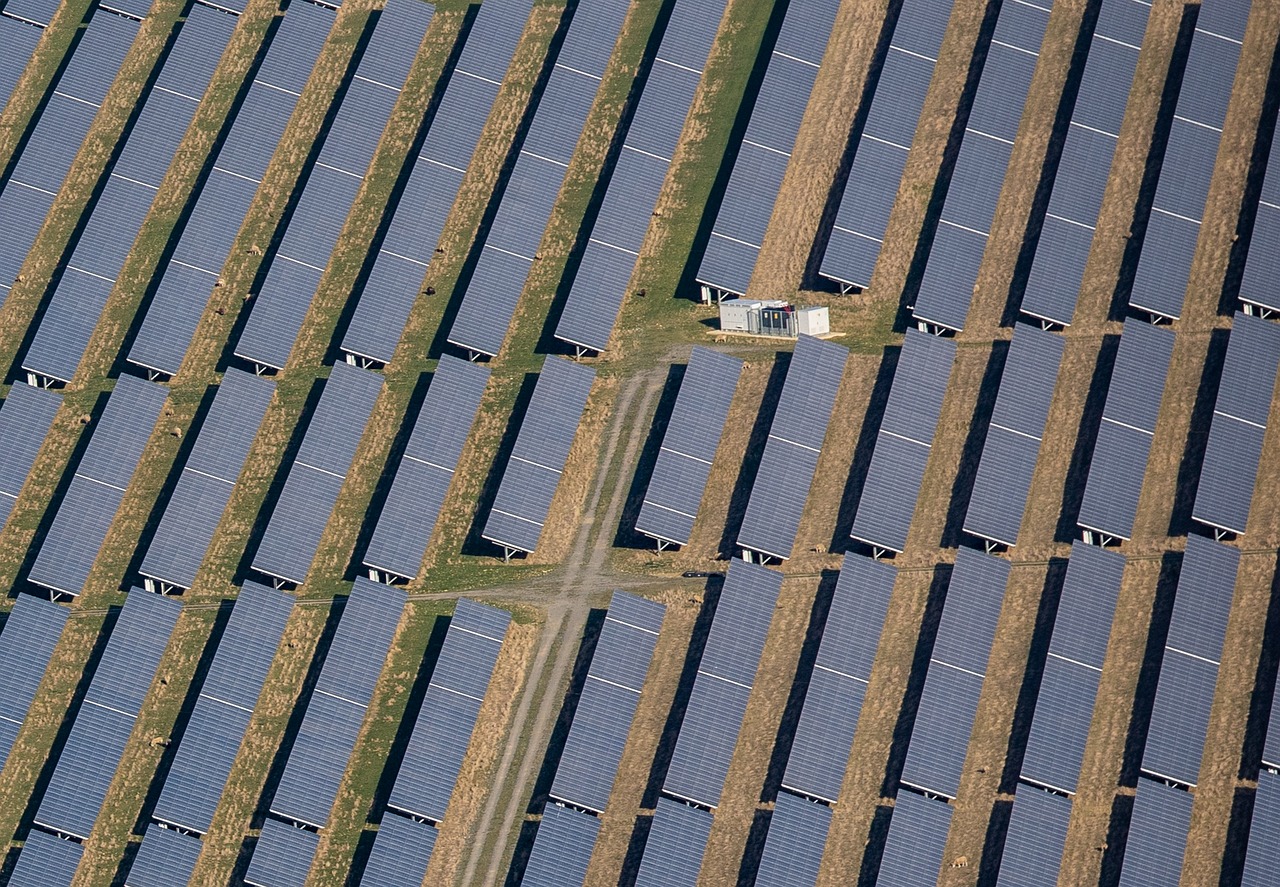
Solar Energy Storage Solutions
As we dive into the fascinating world of solar energy, one of the most critical components that often gets overlooked is energy storage. Imagine this: the sun shines bright during the day, but what happens when the sun sets? How do we harness that abundant energy for use when we need it the most? This is where innovative come into play, ensuring that we can maximize the benefits of solar power around the clock.
Energy storage systems are essential for addressing the intermittency of solar energy generation. Without storage, solar energy can only be used when the sun is shining. Fortunately, advancements in battery technology have paved the way for more efficient and cost-effective solutions. Currently, the most popular storage options include lithium-ion batteries, flow batteries, and even emerging technologies like solid-state batteries. Each of these technologies has its own unique advantages and challenges:
| Battery Type | Advantages | Challenges |
|---|---|---|
| Lithium-Ion | High energy density, long cycle life | Resource-intensive; recycling concerns |
| Flow Batteries | Scalable, long-duration storage | Lower energy density; larger footprint |
| Solid-State Batteries | Higher safety, potential for greater energy density | Still in development; cost concerns |
Additionally, other storage solutions such as pumped hydro storage and thermal energy storage are gaining traction. Pumped hydro storage works by moving water between two reservoirs at different elevations, effectively storing energy in the form of gravitational potential energy. On the other hand, thermal energy storage systems, which store heat generated from solar energy, can be particularly effective for applications that require heating, such as in industrial processes.
One of the most exciting developments in solar energy storage is the rise of smart grids. These advanced electrical grids utilize digital technology to monitor and manage the transport of electricity from all generation sources to meet the varying electricity demands of end users. By integrating solar energy storage with smart grid technology, we can optimize energy use and enhance grid reliability. Imagine a world where your home can not only generate its own energy but also store it for later use, all while communicating with the grid to ensure maximum efficiency!
In conclusion, solar energy storage solutions are a game-changer in the quest for a sustainable energy future. As technology continues to evolve, we can expect to see even more innovative approaches to energy storage that will make solar power more reliable and accessible for everyone. The transition to renewable energy is not just about harnessing the sun's rays; it's also about ensuring we can use that energy when we need it the most. So, as we look forward to a future powered by the sun, let’s keep an eye on these exciting developments in energy storage!
- What is solar energy storage? Solar energy storage refers to systems that capture and store energy generated from solar panels for later use, ensuring a reliable power supply even when the sun isn't shining.
- Why is energy storage important for solar energy? Energy storage is crucial because it allows for the use of solar energy at any time, overcoming the intermittent nature of solar power generation.
- What are the most common types of solar energy storage systems? The most common types include lithium-ion batteries, flow batteries, and thermal energy storage systems.
- How do smart grids enhance solar energy storage? Smart grids use technology to optimize the distribution and use of energy, allowing for better integration of solar energy and storage solutions.

Wind Energy Developments
Wind energy has rapidly transformed from a niche alternative to a dominant player in the renewable energy landscape. With the world increasingly leaning towards sustainable energy solutions, wind power has emerged as a key contributor to reducing greenhouse gas emissions and fostering energy independence. The latest technological advancements have not only enhanced the efficiency of wind turbines but have also expanded the potential for wind energy generation, particularly in offshore environments.
One of the most exciting developments in the wind energy sector is the rise of offshore wind farms. These massive installations, often located far from shore, harness the powerful and consistent winds that blow over oceans and large bodies of water. The engineering challenges associated with building and maintaining offshore wind turbines are significant, yet innovative solutions are paving the way for their success. For instance, advancements in floating turbine technology allow these structures to be placed in deeper waters, where wind speeds are generally higher and more stable.
In addition to offshore wind farms, the integration of smart technology into wind turbines is revolutionizing the industry. By incorporating real-time monitoring systems and data analytics, operators can optimize turbine performance and maintenance schedules. This not only maximizes energy output but also extends the lifespan of the equipment. Imagine a wind farm where each turbine communicates with a central system, adjusting its operation based on real-time wind conditions and energy demand—this is the future of wind energy production.
Moreover, the design of wind turbines has seen remarkable improvements. Modern turbines are taller and equipped with larger blades, allowing them to capture more wind energy. According to recent studies, new turbine designs can increase energy capture by up to 20% compared to older models. This efficiency boost is crucial as it directly impacts the cost of wind energy, making it more competitive with traditional fossil fuels.
Another critical aspect of wind energy development is the environmental impact. While wind energy is one of the cleanest forms of power generation, there are concerns regarding its effects on local wildlife, particularly birds and bats. Researchers are actively working on solutions to mitigate these impacts, such as innovative turbine designs that reduce collisions and the use of radar technology to monitor avian activity. Balancing energy production with ecological preservation is a challenge that the industry is committed to addressing.
In summary, the developments in wind energy are not just about harnessing the wind; they are about creating a sustainable future. With ongoing innovations in turbine technology, offshore installations, and smart systems, the wind energy sector is poised for exponential growth. The question remains: how will we harness this potential to meet our energy needs while protecting our planet?
- What are the main benefits of wind energy? Wind energy is renewable, reduces greenhouse gas emissions, and can lower energy costs in the long run.
- How does offshore wind energy differ from onshore? Offshore wind farms typically benefit from stronger and more consistent winds, which can lead to higher energy output.
- What are the environmental concerns associated with wind energy? Potential impacts on wildlife, particularly birds and bats, and land use considerations are key concerns that are being addressed through research and technology.
- How do smart wind turbines work? Smart turbines use sensors and data analytics to monitor conditions and optimize their performance in real-time.

Offshore Wind Farms
Offshore wind farms are rapidly emerging as a game-changer in the renewable energy landscape. These colossal structures, built on the open seas, harness the power of wind in ways that onshore farms simply cannot match. Why? Because the winds over the ocean are typically stronger and more consistent, which translates to higher energy production. Imagine the vast potential of these farms as they tap into the relentless energy of the ocean breezes!
However, constructing and maintaining offshore wind farms comes with its own set of challenges. The engineering feats required to build these installations in harsh marine environments are nothing short of remarkable. From dealing with rough seas to ensuring the turbines can withstand corrosive saltwater, every aspect of offshore wind energy demands innovation and resilience. But the rewards are significant, as these farms can produce vast amounts of electricity with minimal environmental impact.
Here’s a quick overview of some of the key benefits and challenges associated with offshore wind farms:
- Benefits:
- Higher Energy Output: Offshore winds are generally stronger and more reliable.
- Reduced Land Use: These farms do not occupy valuable land space, helping to preserve ecosystems.
- Job Creation: The construction and maintenance of offshore wind farms create numerous job opportunities.
- Challenges:
- High Initial Costs: The investment required for offshore projects is significantly higher than onshore.
- Technical Complexity: Engineering solutions must be robust to withstand marine conditions.
- Logistical Issues: Transporting materials and personnel to offshore sites can be complicated.
As technology advances, the efficiency of offshore wind farms continues to improve. Innovations in turbine design, such as larger blades and higher towers, allow these systems to capture more wind energy than ever before. Additionally, floating wind turbine technology is paving the way for farms to be established in deeper waters, where winds are even stronger and more consistent. This could revolutionize the industry and expand the geographic reach of wind energy production.
In summary, offshore wind farms represent a critical piece of the puzzle in our transition to renewable energy. They not only contribute to reducing carbon emissions but also play a vital role in energy independence and security. As we continue to make strides in this field, the future looks bright—quite literally!—for offshore wind energy.
- What is an offshore wind farm?
An offshore wind farm is a group of wind turbines located in bodies of water, typically on the continental shelf, designed to generate electricity from wind energy.
- How do offshore wind farms work?
Offshore wind farms operate by converting the kinetic energy from wind into mechanical power, which is then transformed into electricity using generators.
- What are the environmental impacts of offshore wind farms?
While offshore wind farms have a lower environmental impact compared to fossil fuels, they can affect marine life and ecosystems. However, careful planning and technology can mitigate these effects.
- How much electricity can an offshore wind farm produce?
The amount of electricity generated by an offshore wind farm depends on its size, the number of turbines, and wind conditions, but some farms can produce enough energy to power hundreds of thousands of homes.

Smart Wind Turbines
In the ever-evolving landscape of renewable energy, are emerging as a game-changer. These high-tech marvels are not just your average wind turbines; they are equipped with advanced sensors and software that allow for real-time monitoring and optimization of energy production. Imagine having a wind turbine that can not only generate electricity but also communicate its performance and maintenance needs back to operators—this is the future that smart wind technology promises.
At the heart of smart wind turbines lies the integration of data analytics and artificial intelligence (AI). By collecting data on wind speed, direction, temperature, and other environmental factors, these turbines can adjust their blades' pitch and orientation to maximize efficiency. This dynamic adaptability is akin to a skilled athlete adjusting their stance based on changing conditions, ensuring they always perform at their best.
Moreover, the implementation of predictive maintenance is a significant advantage of smart wind turbines. Traditional turbines often rely on scheduled maintenance, which can lead to unnecessary downtime and costs. In contrast, smart turbines use data to predict when components are likely to fail, allowing for timely interventions that minimize disruptions. This proactive approach not only enhances operational efficiency but also extends the lifespan of the turbines.
To illustrate the impact of smart wind technology, consider the following table that compares traditional wind turbines with their smart counterparts:
| Feature | Traditional Wind Turbines | Smart Wind Turbines |
|---|---|---|
| Data Monitoring | Manual checks and scheduled maintenance | Real-time monitoring with predictive analytics |
| Efficiency | Fixed blade positions | Adaptive blade pitch and orientation |
| Maintenance Approach | Reactive maintenance | Predictive maintenance |
| Operational Downtime | Higher due to unexpected failures | Lower due to timely interventions |
The benefits of smart wind turbines extend beyond operational efficiency. They also contribute to a more sustainable energy landscape. By optimizing energy production, these turbines can help meet the growing demand for renewable energy while minimizing the environmental impact. In a world where climate change is a pressing concern, innovations like smart wind turbines are pivotal in transitioning to a cleaner, greener energy future.
In conclusion, the rise of smart wind turbines embodies the intersection of technology and sustainability. As we continue to harness the power of wind, these intelligent systems will play a crucial role in shaping the renewable energy landscape, making it more efficient, reliable, and sustainable for generations to come.
- What are smart wind turbines? Smart wind turbines are advanced wind energy systems equipped with sensors and AI that optimize performance and maintenance.
- How do smart wind turbines improve efficiency? They use real-time data to adjust their operations, maximizing energy capture based on changing wind conditions.
- What is predictive maintenance? Predictive maintenance is a proactive approach that uses data to anticipate equipment failures before they occur, reducing downtime.
- Why are smart wind turbines important for sustainability? They enhance energy production efficiency and reduce environmental impact, contributing to a cleaner energy future.
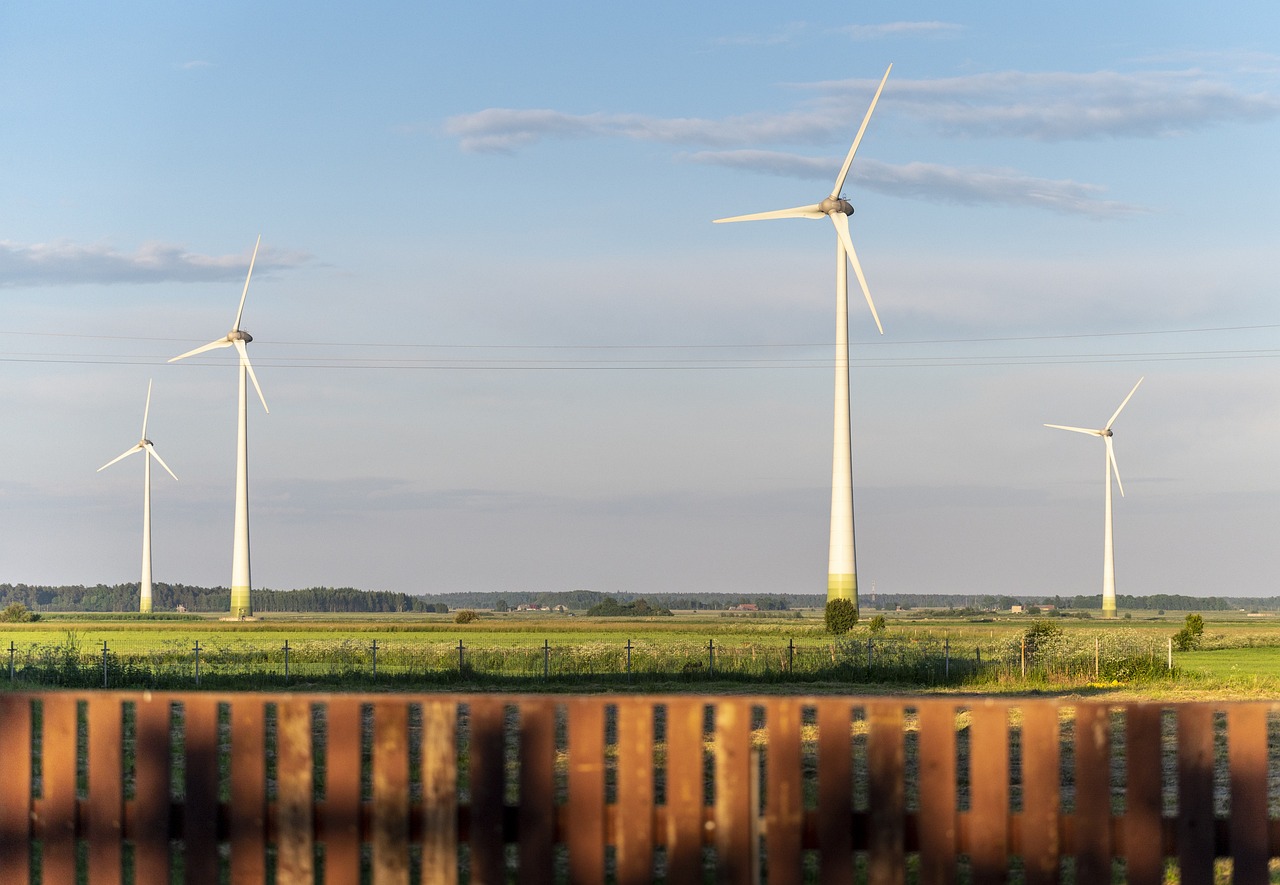
Hydropower Innovations
Hydropower has long been recognized as a reliable source of renewable energy, but recent innovations are taking this age-old technology to new heights. As the world increasingly shifts towards sustainable energy solutions, hydropower stands out not just for its capacity to generate electricity but also for its ability to adapt and evolve. Innovations in this sector are not merely about enhancing efficiency; they also focus on minimizing environmental impact, making hydropower a more sustainable choice. Imagine harnessing the power of flowing water without disrupting the delicate ecosystems that thrive in and around our rivers and lakes. This is the promise of modern hydropower innovations.
One of the most exciting developments in hydropower is the rise of small-scale hydroelectric projects. Unlike traditional large dams that can flood vast areas and displace communities, these smaller systems can be integrated into existing waterways with minimal disruption. For instance, run-of-river systems utilize the natural flow of rivers to generate electricity without the need for large reservoirs. This approach not only preserves local habitats but also allows for a more decentralized energy production model, making it easier for communities to adopt renewable energy solutions.
Another significant advancement is the improvement in turbine efficiency. Modern turbines are designed to maximize energy extraction while minimizing environmental impacts. Innovations such as fish-friendly turbines are being developed to ensure that aquatic life is not harmed during energy generation. These turbines allow fish to pass through with minimal injury, thus promoting biodiversity. Moreover, advancements in materials and design have led to turbines that can operate effectively in lower water flows, expanding the potential for hydropower generation in areas previously considered unsuitable.
As we look to the future, the integration of technology plays a crucial role in hydropower innovations. Smart grid technology is being employed to monitor and optimize energy production in real-time. This means that hydropower facilities can adjust their output based on demand, ensuring that energy is used efficiently. Additionally, data analytics is helping to predict water availability and optimize the timing of energy generation, leading to better resource management and reduced waste.
To summarize the key innovations in hydropower, consider the following table:
| Innovation | Description | Benefits |
|---|---|---|
| Small-Scale Hydroelectric Projects | Utilizes existing waterways for energy generation. | Minimal environmental disruption, decentralized energy production. |
| Fish-Friendly Turbines | Designed to minimize harm to aquatic life. | Promotes biodiversity and sustainable practices. |
| Smart Grid Technology | Real-time monitoring and optimization of energy output. | Improved efficiency and resource management. |
In conclusion, the innovations in hydropower are not just about generating electricity; they represent a holistic approach to energy production that respects and preserves our environment. By embracing these advancements, we can ensure that hydropower continues to be a vital part of our renewable energy landscape, providing sustainable solutions for generations to come.
- What is hydropower and how does it work?
Hydropower generates electricity by harnessing the energy of flowing water, typically through dams or run-of-river systems. - What are the environmental impacts of hydropower?
While hydropower is a renewable resource, large-scale projects can disrupt ecosystems. Innovations aim to minimize these impacts. - How do small-scale hydro projects differ from traditional dams?
Small-scale projects use existing water flows without large reservoirs, reducing ecological disruption and community displacement. - What advancements are being made in turbine technology?
Modern turbines are more efficient and designed to be fish-friendly, promoting biodiversity.

Run-of-River Hydropower
Run-of-river hydropower is an innovative approach to harnessing the energy of flowing water without the need for large reservoirs. Unlike traditional hydropower plants that rely on significant dam structures to create a water head, run-of-river systems utilize the natural flow of rivers to generate electricity. This method not only minimizes environmental disruption but also offers a more sustainable and efficient way to produce renewable energy. Imagine a river flowing freely, with turbines strategically placed to capture its energy, creating a harmonious balance between nature and technology.
One of the most compelling advantages of run-of-river systems is their relatively small ecological footprint. By avoiding the construction of large dams, these projects preserve local ecosystems and habitats. This approach is particularly beneficial in regions where environmental conservation is a priority. However, it’s important to recognize that run-of-river hydropower comes with its own set of challenges. The variability of river flows can affect energy generation, making it essential to implement effective management strategies to ensure a consistent energy supply.
To illustrate the effectiveness of run-of-river hydropower, let's look at some key benefits and challenges associated with this technology:
| Benefits | Challenges |
|---|---|
| Minimal environmental impact | Dependence on river flow variability |
| Lower construction costs compared to large dams | Potential for sedimentation issues |
| Preservation of aquatic ecosystems | Limited energy generation capacity during dry seasons |
As technology advances, the efficiency of run-of-river hydropower systems continues to improve. Innovations in turbine design and water flow management are enhancing energy capture rates, making these systems more viable for widespread adoption. Furthermore, the integration of smart technology allows for real-time monitoring of river conditions, ensuring optimal performance and responsiveness to changing environmental factors.
In conclusion, run-of-river hydropower presents a promising avenue for sustainable energy production. By leveraging the natural flow of rivers, this approach not only generates renewable energy but also respects and preserves the ecological integrity of waterways. As we continue to seek solutions to our energy needs, embracing technologies like run-of-river hydropower will be essential in building a greener, more sustainable future.
Frequently Asked Questions
- What is run-of-river hydropower? It is a method of generating electricity from flowing water without large reservoirs, utilizing the natural flow of rivers.
- What are the environmental impacts of run-of-river systems? They have a minimal ecological footprint compared to traditional hydropower, preserving local ecosystems and habitats.
- Can run-of-river hydropower provide consistent energy? While it can be affected by river flow variability, effective management strategies can help ensure a more stable energy supply.
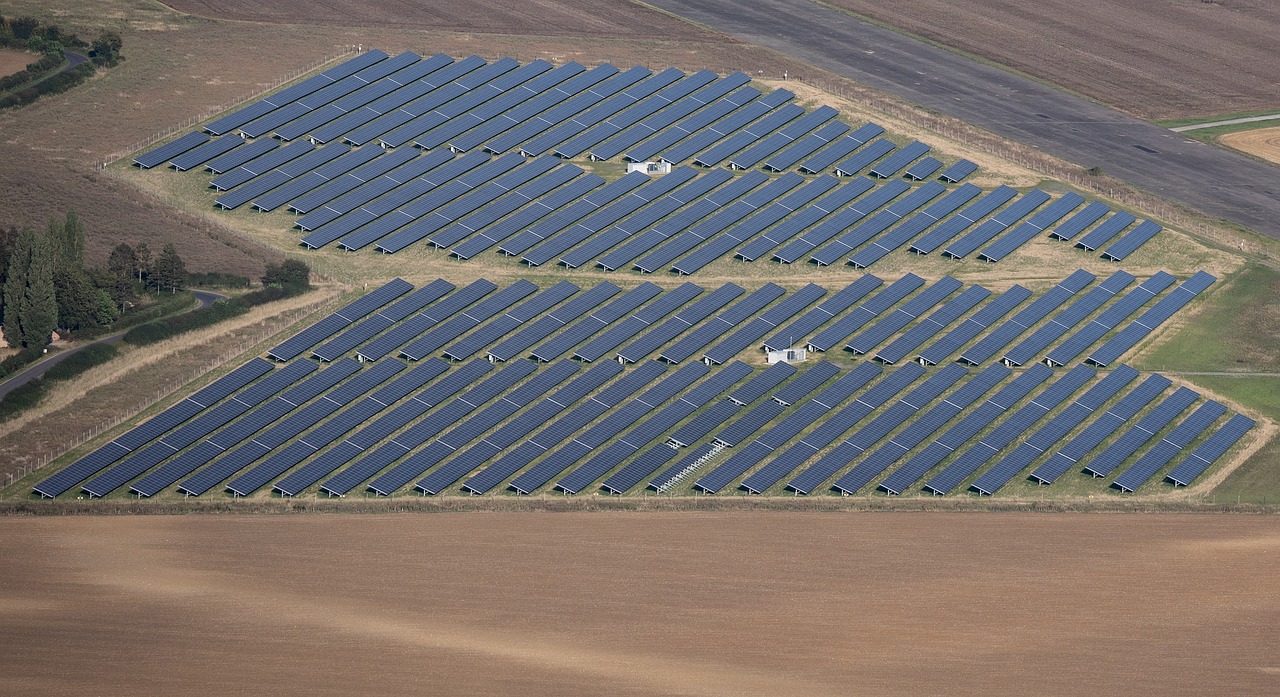
Hydropower and Environmental Sustainability
Hydropower has long been recognized as a reliable source of renewable energy, but its relationship with the environment is complex. As we strive for a sustainable future, it's crucial to balance energy production with ecological preservation. Recent innovations in hydropower technology aim to mitigate the environmental impacts traditionally associated with large dam projects. This includes the development of smaller, run-of-river systems that generate electricity without the need for extensive reservoirs, thereby minimizing habitat disruption and preserving local ecosystems.
One of the most promising approaches to enhancing the sustainability of hydropower is through the use of fish-friendly turbines. These innovative designs allow fish to pass through turbines with minimal harm, addressing one of the major criticisms of traditional hydropower systems. Additionally, new monitoring technologies are being implemented to track fish populations and ensure their health is not adversely affected by energy production. This proactive strategy not only supports biodiversity but also helps maintain the social license to operate for hydropower facilities.
Another important aspect of hydropower sustainability is the integration of environmental flow requirements. This concept involves managing water releases from dams to mimic natural river flows. By doing so, hydropower plants can help maintain the ecological integrity of river systems, supporting aquatic life and preserving the natural habitats that many species depend on. The implementation of such practices is essential in ensuring that hydropower can coexist harmoniously with the environment.
Moreover, the use of advanced monitoring systems allows for real-time data collection regarding water quality and ecosystem health. This data not only informs operational decisions but also aids in regulatory compliance and environmental stewardship. The result is a more sustainable approach to energy production that respects both human and ecological needs.
To summarize, the evolution of hydropower technology is paving the way for a more sustainable energy future. By focusing on innovations that prioritize environmental health, the hydropower industry can continue to contribute significantly to our energy needs while protecting the planet. As we move forward, it is essential to embrace these advancements and foster practices that promote sustainability in every aspect of energy production.
- What is hydropower? Hydropower is energy generated from the movement of water, typically using dams or run-of-river systems to convert kinetic energy into electricity.
- How does hydropower impact the environment? Traditional hydropower systems can disrupt local ecosystems, but innovations are being made to reduce these impacts, such as fish-friendly turbines and environmental flow management.
- Are there sustainable hydropower options? Yes, smaller-scale projects and run-of-river systems are considered more sustainable as they have a lower ecological footprint compared to large dam projects.
- What role does technology play in sustainable hydropower? Advanced technologies for monitoring and managing water flows help ensure that hydropower production does not compromise environmental health.
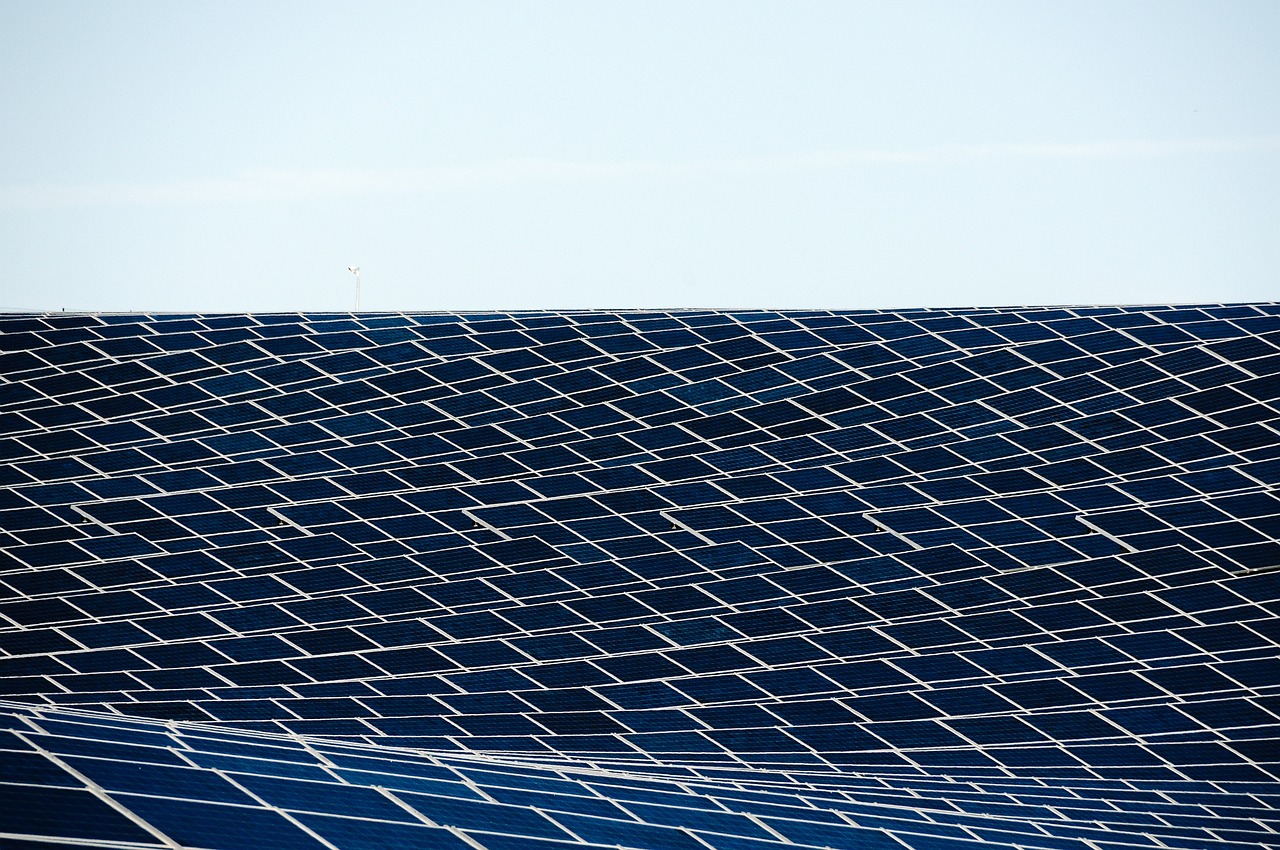
Geothermal Energy Advances
Geothermal energy is often hailed as one of the most consistent and reliable sources of renewable energy available today. Unlike solar or wind energy, which can fluctuate based on weather conditions, geothermal energy taps into the earth’s internal heat, providing a steady supply of power. Recent technological advancements in geothermal systems have significantly improved the efficiency of energy extraction, making it a more viable option for energy generation in various regions around the globe.
One of the most exciting developments in this field is the emergence of Enhanced Geothermal Systems (EGS). EGS utilizes advanced techniques to extract heat from the earth's crust, allowing us to harness geothermal energy in areas that were previously considered unsuitable for energy production. This innovative approach not only broadens the geographic scope of geothermal energy but also enhances its potential contribution to our energy mix. Imagine being able to tap into the earth's heat in places where traditional geothermal systems would never work—this could revolutionize the way we think about energy generation!
Moreover, the use of geothermal heat pumps has gained traction in both residential and commercial sectors. These systems are designed to provide efficient heating and cooling solutions by exploiting the relatively constant temperatures found just below the earth's surface. By transferring heat to and from the ground, geothermal heat pumps can significantly reduce energy consumption. For instance, during winter, they draw heat from the ground to warm buildings, while in summer, the process is reversed to provide cooling. This dual functionality not only enhances energy efficiency but also offers substantial savings on energy bills.
To give you a clearer picture of the benefits and workings of geothermal energy, here’s a quick comparison of traditional geothermal systems versus enhanced systems:
| Feature | Traditional Geothermal Systems | Enhanced Geothermal Systems (EGS) |
|---|---|---|
| Location | Requires specific geological settings (volcanic areas) | Can be deployed in a wider range of areas |
| Heat Extraction | Uses existing reservoirs of hot water/steam | Creates reservoirs by injecting water into hot rock formations |
| Energy Output | Limited to specific regions | Potentially higher output due to broader applicability |
| Environmental Impact | Lower than fossil fuels but can affect local ecosystems | Designed to minimize ecological disruption |
As we continue to innovate in the field of geothermal energy, it’s crucial to address the environmental concerns that accompany any form of energy production. New technologies are being developed to mitigate the ecological impacts of geothermal projects, ensuring that we can harness this powerful resource sustainably. For instance, methods to minimize land use and reduce water consumption are being prioritized, which is essential for maintaining the delicate balance of our ecosystems.
In conclusion, the advances in geothermal energy technologies not only promise to enhance our energy security but also pave the way for a more sustainable future. By leveraging the earth's natural heat, we can reduce our reliance on fossil fuels and move towards a cleaner, greener energy landscape. As we invest in these innovations, we are not just addressing today’s energy needs but are also laying the groundwork for a sustainable tomorrow.
- What is geothermal energy? Geothermal energy is the heat that comes from the sub-surface of the earth. It is contained in the rocks and fluids beneath the earth's crust and can be found almost everywhere beneath the earth's surface.
- How does a geothermal heat pump work? Geothermal heat pumps use the constant temperature of the earth as the exchange medium instead of the outside air temperature. They transfer heat to and from the ground to provide heating and cooling.
- What are the benefits of geothermal energy? Geothermal energy is sustainable, has a small carbon footprint, provides reliable energy, and can be used for both electricity generation and direct heating applications.
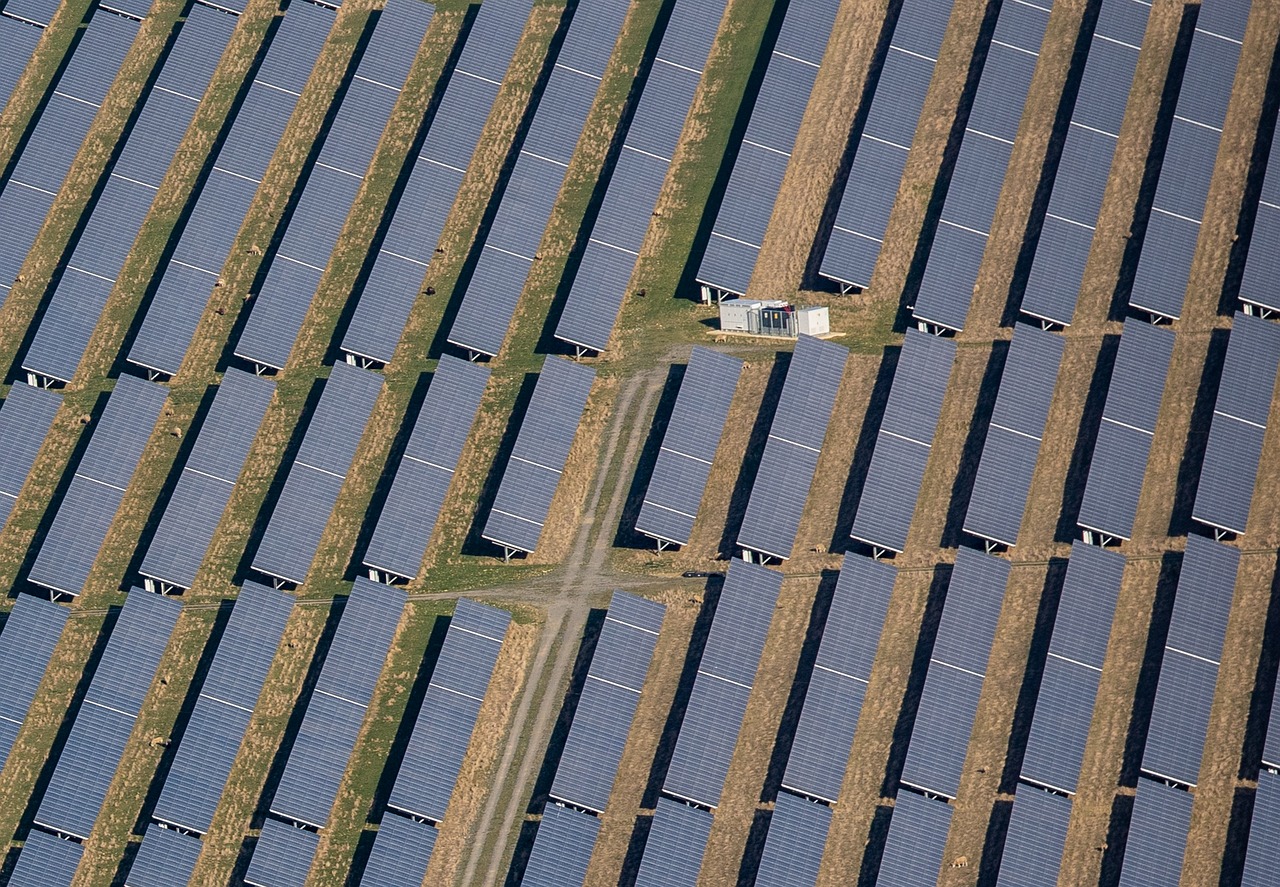
Enhanced Geothermal Systems
Enhanced Geothermal Systems (EGS) represent a groundbreaking leap in the utilization of geothermal energy. Unlike traditional geothermal systems that rely on naturally occurring hydrothermal resources, EGS taps into the Earth's heat by creating artificial reservoirs. This innovative approach allows us to harness geothermal energy from areas that were previously considered unsuitable for energy production. Imagine being able to extract heat from the earth's crust, even in places where hot springs or geysers are absent! It’s like finding a hidden treasure beneath our feet.
The process of EGS involves several key steps. Initially, water is injected into hot rock formations deep underground, where it is heated by the Earth's natural geothermal gradient. This heated water is then extracted, producing steam that can drive turbines to generate electricity. The beauty of EGS lies in its flexibility; it can be deployed in a variety of geological settings, expanding the potential for geothermal energy production worldwide.
One of the most exciting aspects of EGS is its potential to provide a constant and reliable source of energy. Unlike solar or wind power, which are dependent on weather conditions, geothermal energy can produce electricity 24/7. This reliability makes it a valuable component of a diversified energy portfolio. Furthermore, EGS has a significantly lower carbon footprint compared to fossil fuels, making it an environmentally friendly alternative.
However, the development of EGS is not without its challenges. The technology requires advanced drilling techniques and careful management of the geothermal reservoirs to prevent issues such as induced seismicity, which is the minor earthquakes that can occur as a result of fluid injection into the Earth. To mitigate these risks, extensive research and monitoring are essential.
In summary, Enhanced Geothermal Systems hold immense promise for the future of renewable energy. By unlocking the Earth’s heat in previously inaccessible areas, EGS can contribute significantly to our energy needs while minimizing environmental impact. As technology continues to evolve, we can expect to see more projects utilizing EGS, paving the way for a more sustainable energy landscape.
- What are Enhanced Geothermal Systems? EGS are systems that enhance the natural geothermal resources by creating artificial reservoirs to extract heat from the Earth’s crust.
- How does EGS work? EGS works by injecting water into hot rock formations, heating it, and then extracting the steam to generate electricity.
- What are the benefits of EGS? EGS provides a reliable energy source, operates continuously, and has a lower environmental impact compared to fossil fuels.
- What challenges does EGS face? EGS faces challenges such as the need for advanced drilling technologies and managing induced seismicity risks.
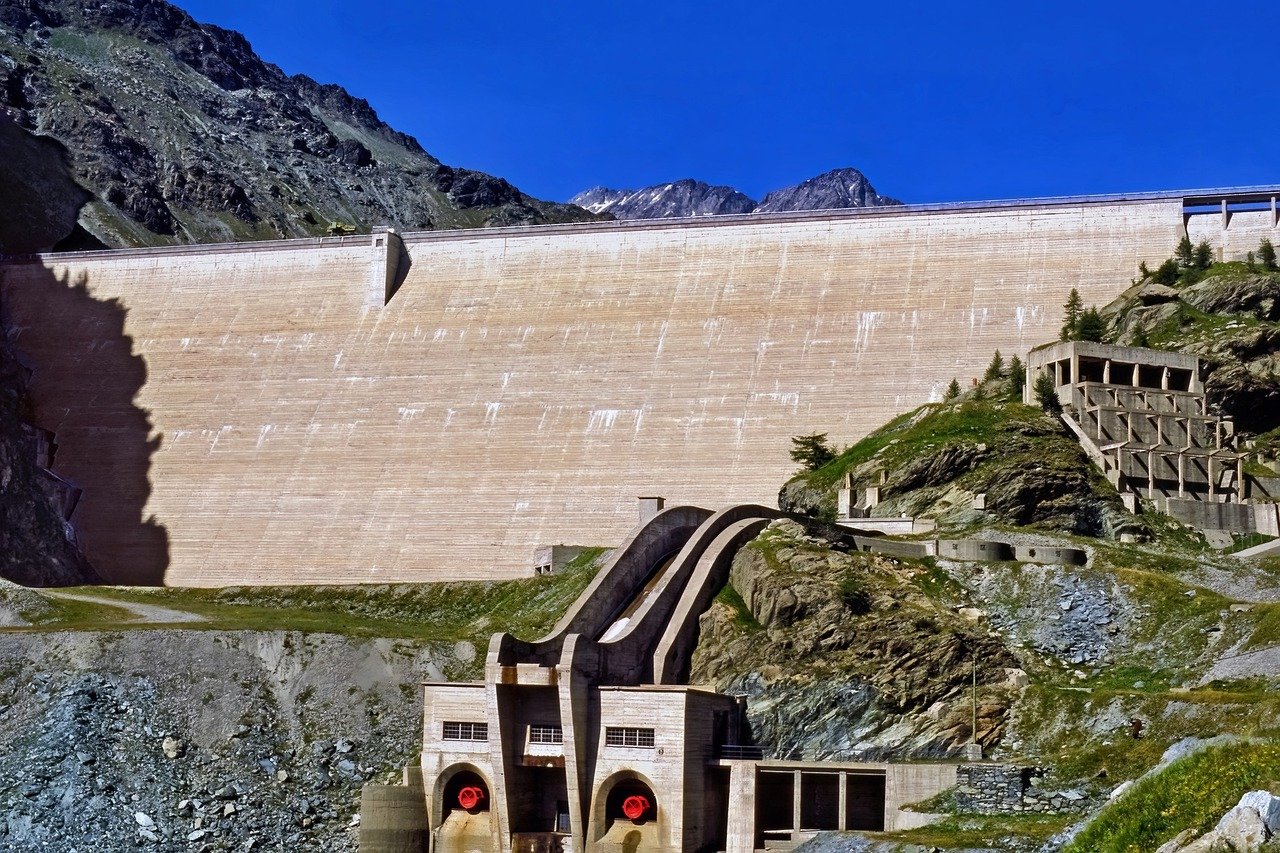
Geothermal Heat Pumps
Geothermal heat pumps are a remarkable innovation in the realm of energy efficiency, providing a sustainable solution for heating and cooling in both residential and commercial buildings. These systems utilize the constant temperature of the earth just a few feet below the surface to regulate indoor climates. Unlike traditional heating systems that rely on fossil fuels or electricity generated from non-renewable sources, geothermal heat pumps harness the earth's natural thermal energy, making them a cleaner and more sustainable option.
One of the key advantages of geothermal heat pumps is their efficiency. They can achieve efficiencies of up to 400% in heating mode, meaning that for every unit of electricity consumed, they can produce four units of heating energy. This is a stark contrast to conventional heating systems, which typically operate at efficiencies of 80-95%. The technology behind geothermal heat pumps involves a series of underground pipes, known as ground loops, that circulate a fluid—usually a mixture of water and antifreeze—through the earth. As the fluid moves through the loops, it absorbs heat from the ground in the winter and dissipates heat back into the ground during the summer, effectively reversing the process.
Moreover, the installation of geothermal heat pumps is an investment that pays off in the long run. While the initial setup costs can be higher than traditional systems, the energy savings can lead to significant reductions in utility bills over time. On average, homeowners can expect to save between 30-60% on their heating and cooling costs. Additionally, many governments offer incentives such as tax credits and rebates to encourage the adoption of geothermal technology, further enhancing the economic appeal.
To give you a clearer picture of the benefits and workings of geothermal heat pumps, here’s a simple comparison of their features:
| Feature | Geothermal Heat Pumps | Traditional Heating Systems |
|---|---|---|
| Energy Efficiency | Up to 400% | 80-95% |
| Operating Cost Savings | 30-60% savings | Variable savings |
| Environmental Impact | Low emissions | Higher emissions |
| Longevity | 25+ years | 15-20 years |
In summary, geothermal heat pumps represent a forward-thinking approach to energy use, marrying efficiency with sustainability. As we continue to face the challenges of climate change and the need for cleaner energy solutions, the role of geothermal technology will undoubtedly become more prominent. By investing in geothermal systems, not only do we reduce our carbon footprint, but we also pave the way for a more sustainable and energy-efficient future.
- How do geothermal heat pumps work? Geothermal heat pumps transfer heat to and from the ground to heat or cool a building, utilizing the earth's stable temperature.
- Are geothermal heat pumps suitable for all climates? Yes, they can be effective in various climates, as they rely on the ground temperature, which remains relatively constant.
- What is the lifespan of a geothermal heat pump? With proper maintenance, geothermal heat pumps can last over 25 years, significantly longer than traditional systems.
- What are the installation costs associated with geothermal heat pumps? While the upfront costs can be higher, they often pay off through energy savings and government incentives.
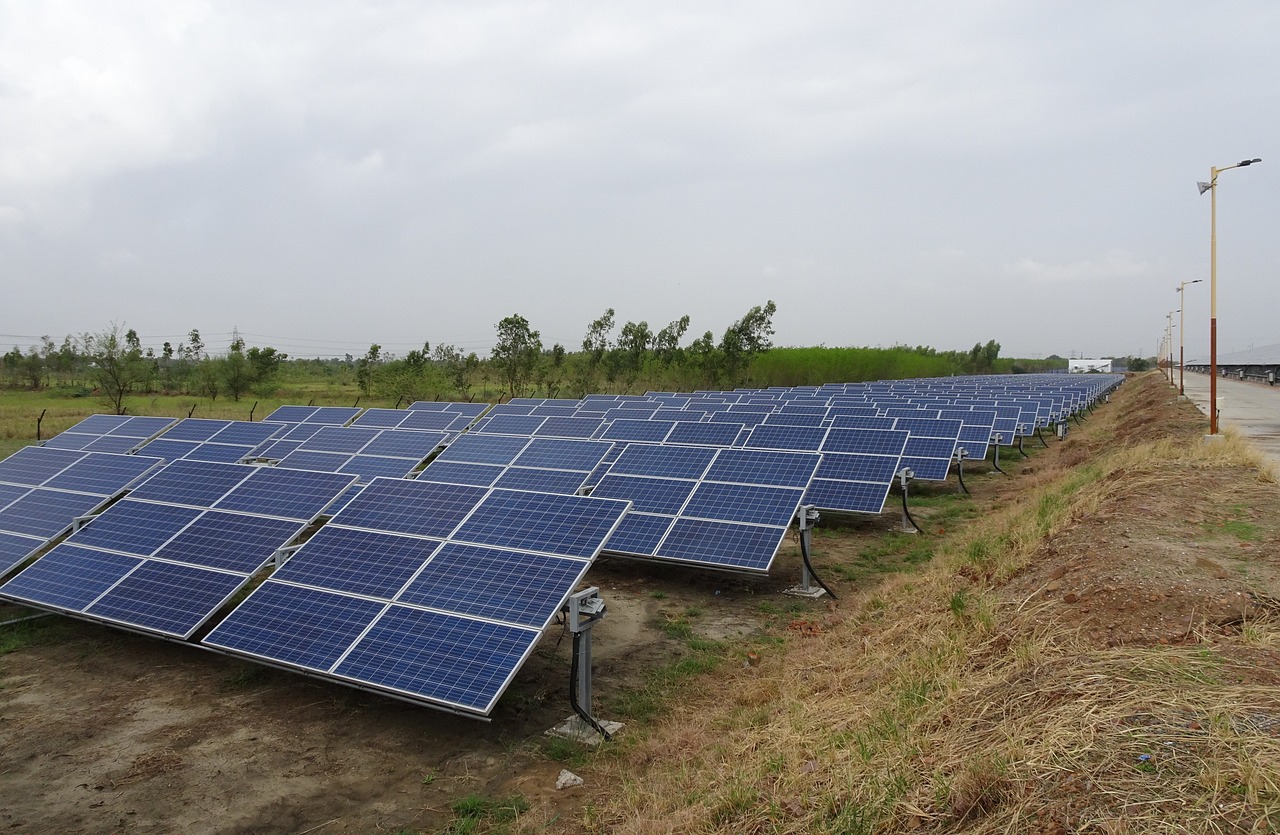
The Role of Policy and Investment
When it comes to renewable energy innovations, the role of government policy and investment cannot be overstated. These two elements act as the backbone of the renewable energy sector, propelling advancements and facilitating the transition to a more sustainable energy future. Without the right policies in place, even the most groundbreaking technologies can struggle to gain traction in the market. Think of policies as the fuel that drives the engine of innovation; without it, the engine might sputter or stall.
One of the most effective ways governments can encourage the adoption of renewable technologies is through financial incentives. These can come in various forms, such as tax credits, grants, and subsidies that lower the cost barrier for both consumers and businesses. For instance, when a homeowner considers installing solar panels, a generous tax credit can make the difference between a decision to invest in renewable energy or sticking with traditional fossil fuels. Such incentives not only stimulate market growth but also foster a culture of innovation within the renewable energy sector.
In addition to financial incentives, supportive legislation plays a critical role in creating a favorable environment for renewable energy projects. Policies that mandate renewable energy usage or set ambitious carbon reduction targets push companies to innovate. For example, many countries have implemented Renewable Portfolio Standards (RPS), which require utilities to obtain a certain percentage of their energy from renewable sources. This kind of regulation not only drives demand but also encourages investment in research and development, leading to technological advancements that can further lower costs and increase efficiency.
Moreover, international collaboration is vital for advancing renewable energy technologies. Countries can learn from one another, share best practices, and pool resources to tackle common challenges. For instance, partnerships between nations can facilitate knowledge sharing in areas such as grid integration, energy storage solutions, and the development of smart grid technologies. By working together, countries can accelerate the development of innovative solutions to energy challenges.
To illustrate the impact of policy and investment on renewable energy, consider the following table that compares countries with strong supportive policies against those with minimal government intervention:
| Country | Renewable Energy Percentage | Government Incentives |
|---|---|---|
| Germany | 42% | Strong subsidies and feed-in tariffs |
| United States | 20% | Tax credits and state-level incentives |
| China | 30% | Heavy investment in R&D and manufacturing |
| India | 24% | Incentives for solar and wind projects |
| Brazil | 85% | Supportive policies for hydropower |
This table clearly shows that countries with robust government support tend to have a higher percentage of renewable energy in their energy mix. It’s a compelling argument for the necessity of policy and investment in driving the renewable energy sector forward.
In conclusion, the role of policy and investment in renewable energy innovations is not just significant; it is essential. As the world grapples with the challenges of climate change and energy security, the importance of strategic government interventions and financial backing will only grow. The future of renewable energy depends on our ability to create an ecosystem where innovation can flourish, and that starts with effective policies and substantial investments.
- What types of financial incentives are available for renewable energy? Various incentives include tax credits, grants, and rebates that lower the costs for consumers and businesses investing in renewable technologies.
- How do government policies impact renewable energy adoption? Policies such as Renewable Portfolio Standards and tax incentives create a favorable environment for investment and innovation in renewable energy.
- Why is international collaboration important in renewable energy? Countries can share knowledge, resources, and best practices, accelerating the development of innovative solutions to energy challenges.

Incentives for Renewable Energy
In today's world, where climate change is a pressing concern, the shift towards renewable energy is not just a trend; it's a necessity. Government incentives play a pivotal role in accelerating this transition. By providing financial support, tax breaks, and grants, governments are effectively lowering the barriers for both individuals and businesses to invest in renewable technologies. These incentives not only encourage the adoption of sustainable practices but also stimulate economic growth by creating jobs in the green sector.
For instance, in many countries, tax credits are available for homeowners who install solar panels or wind turbines. These credits can significantly reduce the upfront costs, making renewable energy systems more accessible. Additionally, various grants are offered to businesses that invest in energy-efficient technologies, further promoting the adoption of renewable energy solutions.
The effectiveness of these incentives can be seen in the rapid growth of renewable energy installations in recent years. According to a report from the International Renewable Energy Agency (IRENA), global renewable energy capacity has surged, driven largely by supportive policies and financial incentives. As a result, many countries are experiencing a boom in green jobs, ranging from manufacturing to installation and maintenance of renewable energy systems.
Moreover, these incentives are not just beneficial for the environment; they also make economic sense. By investing in renewable energy, governments can reduce their reliance on imported fossil fuels, thus enhancing energy security and stabilizing energy prices. This strategic move can lead to a more resilient economy, less vulnerable to the fluctuations of global oil markets.
In summary, the role of government incentives in promoting renewable energy cannot be overstated. They are essential for fostering innovation and encouraging widespread adoption of renewable technologies. As we look to the future, continued support for these initiatives will be crucial in achieving a sustainable and eco-friendly energy landscape.
- What types of incentives are commonly offered for renewable energy?
Common incentives include tax credits, grants, rebates, and subsidies aimed at reducing the cost of renewable energy installations.
- How do these incentives impact the adoption of renewable energy?
Incentives lower the financial barriers, making renewable energy technologies more appealing and affordable for consumers and businesses.
- Are incentives available for both residential and commercial projects?
Yes, many incentives are designed to benefit both residential and commercial projects, encouraging a wide range of applications for renewable technologies.
- How can I find out what incentives are available in my area?
Local government websites and energy agencies often provide information on available incentives, including eligibility requirements and application processes.

International Collaboration
In the rapidly evolving world of renewable energy, has emerged as a cornerstone for innovation and progress. Countries are beginning to realize that the challenges posed by climate change and energy shortages are not confined by borders; they are global issues that require global solutions. By pooling resources, knowledge, and technology, nations can accelerate the development of renewable energy technologies, ensuring a more sustainable future for all.
One of the most significant aspects of international collaboration is the sharing of best practices. For instance, countries like Denmark and Germany have been pioneers in wind energy technology, while nations such as China have made substantial advancements in solar energy production. By engaging in partnerships, countries can learn from each other's successes and failures, adapting strategies that work best in their unique contexts. This exchange of knowledge can lead to more efficient energy systems and greater adoption of renewable technologies.
Moreover, funding initiatives and joint research projects are crucial components of international collaboration. Governments and organizations across the globe are increasingly investing in research and development (R&D) for renewable energy. For example, the International Renewable Energy Agency (IRENA) facilitates cooperation between member countries by providing a platform for sharing research findings and technological advancements. Such collaborations can lead to significant breakthroughs in energy efficiency and sustainability.
Another critical factor is the establishment of international agreements and treaties that promote renewable energy. The Paris Agreement is a prime example, where countries committed to reducing greenhouse gas emissions and transitioning to cleaner energy sources. These agreements not only set targets but also encourage nations to work together, offering financial and technical support to developing countries. This kind of cooperation is vital for achieving global climate goals.
To illustrate the impact of international collaboration, consider the following table, which highlights some key partnerships and their contributions to renewable energy advancements:
| Partnership | Focus Area | Key Contributions |
|---|---|---|
| IRENA | Global Renewable Energy Cooperation | Facilitates knowledge sharing and R&D funding |
| Mission Innovation | Clean Energy Innovation | Accelerates public and private clean energy innovation |
| Clean Energy Ministerial | Energy Efficiency and Clean Energy | Promotes policies and programs that advance clean energy technology |
Ultimately, the journey towards a sustainable energy future is a collective effort. By fostering , we can harness the collective expertise and resources of nations to tackle pressing energy challenges. As we move forward, it is essential to continue building these partnerships, ensuring that innovation in renewable energy is not just a national endeavor but a global mission.
- What is international collaboration in renewable energy?
International collaboration in renewable energy refers to partnerships between countries to share knowledge, technology, and resources to advance renewable energy technologies and address climate change. - Why is international collaboration important?
It allows countries to learn from each other, share best practices, and pool resources, leading to more efficient and sustainable energy solutions. - What are some examples of international collaboration?
Examples include partnerships like IRENA, Mission Innovation, and the Clean Energy Ministerial, which focus on sharing research and promoting clean energy technologies.
Frequently Asked Questions
- What are the main types of renewable energy?
Renewable energy primarily comes from sources like solar, wind, hydropower, and geothermal. Each of these sources harnesses natural processes to generate energy, making them sustainable alternatives to fossil fuels.
- How does solar energy technology work?
Solar energy systems convert sunlight into electricity using technologies such as photovoltaic cells and solar thermal systems. These innovations have significantly increased efficiency and reduced costs, making solar power more accessible to consumers and businesses alike.
- What advancements have been made in wind energy?
Recent developments in wind energy include the creation of smart wind turbines that utilize data analytics for real-time monitoring and optimization, as well as the expansion of offshore wind farms that harness stronger and more consistent winds found at sea.
- What is run-of-river hydropower?
Run-of-river hydropower systems generate energy by harnessing the natural flow of rivers without the need for large reservoirs. This approach minimizes ecological disruption while still providing a reliable source of renewable energy.
- How do geothermal heat pumps work?
Geothermal heat pumps utilize the earth's stable temperature to provide efficient heating and cooling for buildings. They transfer heat to and from the ground, significantly reducing energy consumption compared to traditional heating and cooling systems.
- What role do government policies play in renewable energy?
Government policies are crucial in promoting renewable energy innovations. Supportive legislation and financial incentives, such as tax credits and grants, stimulate market growth and encourage the adoption of renewable technologies.
- How can international collaboration benefit renewable energy development?
International collaboration fosters knowledge sharing and accelerates the development of innovative solutions to energy challenges. By working together, countries can pool resources and expertise to advance renewable energy technologies more effectively.



















